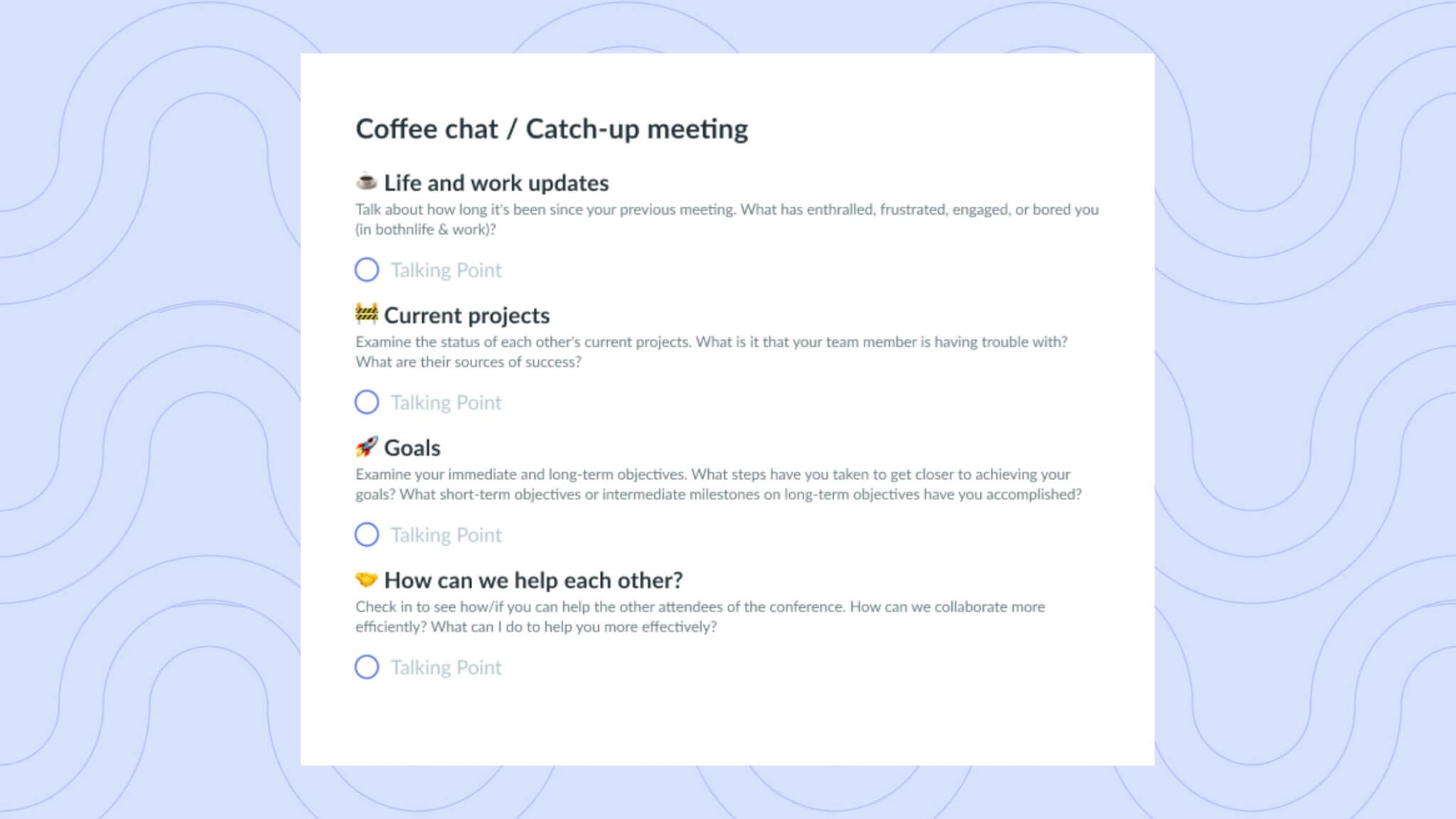In a distributed world, it's difficult to distinguish what can be done online and what needs to be done in person. Let's face it, we were all in a 45-minute one-on-one that could have been an email and didn't get much out of it. But since then, we've all witnessed one Zoom call that we were dying to witness. You see, 12 people on the conference call all having ideas at the same time without knowing who is speaking or where to look. yes you have it
As more companies incorporate flexibility into their business models, it's important to know when you can meet your peers in real life. Whether you're an employee trying to manage remote work and in-person meetings; If you're trying to help your organization develop policies for hybrid work, here are 5 questions to get you started.
Question 1: Is this supposed to be a meeting?
They often assume that when someone calls a meeting, the topic to be discussed must be worthy of that meeting. But that's not always true. Time is a precious commodity at work, and running between meetings and Zoom connections isn't always the best way to use your time.
So before you make (or answer) a meeting call, think about your goals and intentions to take the time to talk to someone. A simple exchange of information, such as email or instant messaging, can be more helpful than a face-to-face or online meeting. It doesn't take up time in anyone's schedule and can be saved for future use. However, a brainstorming session or strategic planning meeting in an office or other work environment is always more productive.

Question 2: Which meetings are organized?
Yes, that's probably a very obvious question. But this simple question is the key to understanding where meetings should be held. Suppose you set up a weekly 1:1 between a team member and a manager. While holding such face-to-face meetings is an added value, a virtual meeting is also appropriate. On the other hand, if you bring your marketing team together for a creative brainstorming session for your next big campaign, they'll likely get more out of it than if they met in real life.
Here is a quick table of the types of meetings we offer in person instead of online:
| On-line | Individual/Hybrid |
| cramps | brainstorming |
| recording | Strategic planning and problem solving |
| status update | mixture |
| communication session | Create a team |
| the following | coaching and mentoring |
| 1:1 p | begin |
| Festive event | |
| seminar | |
| performance evaluation |
Question 3: What is the purpose of this meeting?
Harvard Business Review recommends dividing meetings into two “compartments” based on purpose and asking whether the meeting is task-based or relationship-based. The difference is that a task-oriented meeting is a meeting about checking things off a to-do list, while a relationship-oriented meeting is a meeting with colleagues.
Let's take abroad as an example. Planning an offsite meeting usually involves choosing a location, topic, and date; Accommodation, transportation, meals, etc. This is a task-based meeting that participants can actually join via video conference.
On the real side, teammates should come together, share experiences, get to know each other, and make memories. This is a great example of relationship-based dating. Especially after the COVID-19 pandemic, people are keen to meet their colleagues in person. In a recent survey, we found that 79% of employees are interested in meeting other colleagues in real life and making meaningful connections.

Question 4: What tools and skills will help achieve the goals of this meeting?
Not all dates are created equal. Nothing really demands more than the presence and attention of the participants. On the other hand, they need the tools to implement the process. Whiteboards or TVs for people to share screens or presentations can do a lot to make the meeting more productive and creative.
In this way, a general meeting that does not require any props can easily be held online. However, your more complex strategy or brainstorming sessions will inevitably benefit from a boardroom or meeting room that can provide the right space with the right equipment.
This is also important if you have a more distributed team where some of your colleagues may meet in person and others may live in a different city or country. Most modern offices and coworking spaces have the necessary equipment to host a hybrid meeting, but one thing to keep in mind: make sure everyone is attending.
Question 5: Is there a way to take this encounter to the next level?
One of the greatest benefits of face-to-face meetings is the opportunity to form meaningful business relationships. Whether it's with a client or among team members, face-to-face meetings offer something online meetings simply can't - the opportunity to get to know your colleague on a more personal level.
During a real meeting, you can read someone's facial expressions and body language in a way that a video conference cannot. You can sense their vibes, learn their humor, and engage in short, casual conversations more naturally and intuitively than online. So think about how you can add and enhance the meeting with this social element to increase the value of this interaction.
For example, why not consider a weekly team meeting over lunch or an after-work drink every month? You might even consider moving your department to another location for a few days to collaborate in a non-traditional location!
The post 5 questions you should know when meeting your colleagues in person appeared first on TravelPerk.

